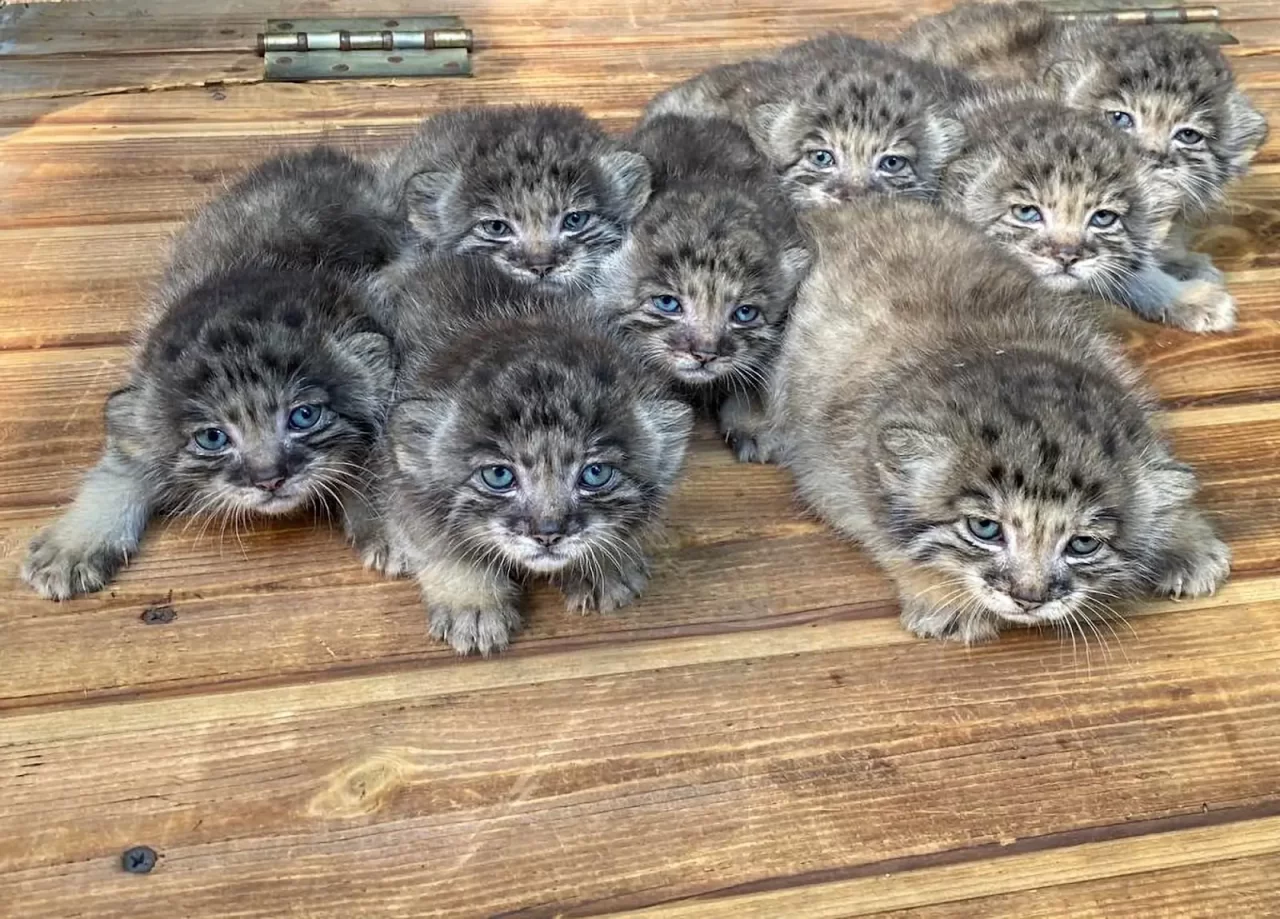The adorable little ones with a pair of striking blue eyes are playing a crucial role in the conservation efforts aimed at protecting their species.
In a recent announcement on the Russian social media network VK.com, the Novosibirsk Zoo in Siberia shared the exciting news that they welcomed 16 wild kittens into their zoo earlier this month. The newborns were divided into three litters, with exact dates of birth being undisclosed. According to Tatyana Pevneva, the head of the International Cooperation Department at Novosibirsk Zoo, three female cats gave birth in June, with one having three kittens, another having five, and the third having eight. These Pallas’ Cats (Otocolobus manul) were born with stunning bright blue eyes that will gradually change to green and then yellow as they mature. The zookeepers and veterinarians are closely monitoring the development of these adorable creatures, and their future remains uncertain at this stage due to their young age.
At Novosibirsk Zoo, two adorable kittens are having the time of their lives as they play in their enclosure. These cute little creatures belong to the Pallas’ Cat breed, which has been bred at the zoo since 1995. In order to support international and European conservation programs, these kittens are sent to zoos all over the world. The descendants of the Pallas’ Cats that have lived in Novosibirsk can now be found in countries such as Germany, Czech Republic, Poland, France, Switzerland, Austria, and Great Britain.
Breeding Pallas’ Cats in captivity is a tough task with a high mortality rate. These felines are usually found in rocky deserts and semi-arid regions stretching from Central Asia to Mongolia. Sadly, this species is endangered due to habitat degradation and being hunted for its fur.
At the Novosibirsk Zoo, a mother Pallas’s Cat and her two adorable kittens have captured the attention of animal lovers. According to data from WWF, there are only 12,000 of these cats living in the wild in Russia. As for those in captivity, as of the end of 2019, there were only 30 at various zoos across the country. The zoo staff has reported that while the kittens venture out of their shelter at times, they tend to hide from strangers, including visitors. However, the workers have also noticed that the kittens are becoming more self-assured, which means chances of seeing them are on the rise.
Read more “Touching Stories about Cats” at Stories – Cute Cat Lover
